The Article
Q Acoustics 3020 bookshelf speakers: First in the Q?
2nd February 2016
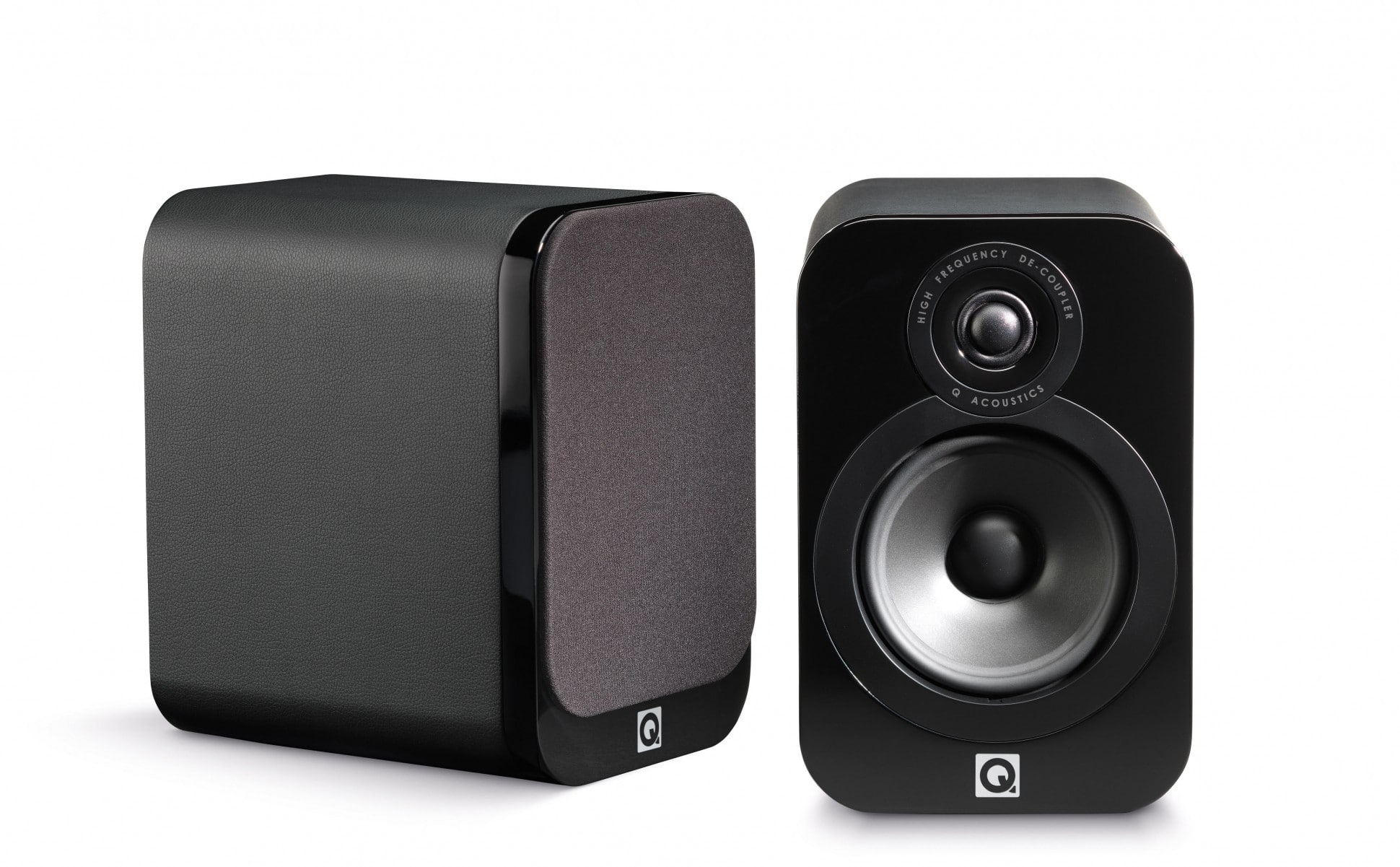
Looking to buy a set of value for money, top sounding speakers? Q Acoustics says that it has just the thing. Paul Rigby reviews the 3020 bookshelf model
Egads it’s busy down there. Where? Why, the budget loudspeaker market. Sitting in and around that £100-£200 band, there’s a host of speaker designs from the likes of Cambridge, Dali, Tannoy, Acoustic Energy, Boston Acoustics, Roth, Monitor Audio and Wharfedale. And that’s not even the entire list!
So what’s a poor hi-fi buyer supposed to do about it? Well, according to Steve Reichert, buy a set of Q Acoustics 3020. But then he would say that, he was drafted onto the design team for the speaker which was largely designed with the help of system and drive unit engineering, Karl-Heinz Fink in Essen and manufactured in China.
Deriving its name from QED, a sister brand under the large Armour Home Electronics umbrella (it was originally going to be a QED speaker brand offshoot, ‘QED Speakers’ or some such), Q Acoustics is very proud of its design and the price point it falls under.
“Many other speaker manufacturers would charge a lot more money for these,” said an effusive Reichert. “If they made the speaker in their own facilities it would actually cost a lot more because of the way that ours are designed in the UK and Germany and then manufactured in China. We are using modern technology not just in the design of the speaker but in the way that it’s produced. Q Acoustics benefit from a high quality design facility in Essen. We have access to a whopping great anechoic chamber. Next door to that is a room where all the laser spectrometry is done, next to that is another dedicated to measuring cabinet resonance and so on.”
Q Acoustics has access to all this high-end testing and development kit but it doesn’t own any of it. In fact, it rents it by the day, which helps keep costs down. The good thing about the Essen arrangement is that the company does not (and will not) go scouring around third-party drive outfits picking and choosing from a menu of matching designs.
“No, because the speaker itself is designed from scratch. All of our drive units are bespoke to us. Nothing is off the shelf. The units are created to give us the performance we want in the cabinet that we also designed.”
You might think, as I did, that if the drives were purchased off a third party supplier, that would lower the price still further.
“It might do,” said an exuberant Reichert, “but we wanted to get these drive units exactly right. What we want is to produce a loudspeaker that is so good that any right minded person would choose it. I’m confident that the economies of scale that we enjoy from the manufacturers enable us to get drive units of high quality. These are not expensive drive units, just well designed.”
The drive units themselves are improved from previous designs. That means that the mid/bass unit, which was a paper and mica mix, is now made from paper and Aramid. Ara…what?
“The substance in there is best known from their brand name, Kevlar. I don’t claim that this is a Kevlar cone, you understand. We use just a small amount in the mix. The mixture changes the tonality to make it a better match for the brand new tweeter. The tweeter itself is completely new,” said Reichert.
Q Acoustics used to use a 25mm soft dome polyester weave tweeter with a neodymium magnet. Not any more, it has drafted in a 21mm dome but it’s a 2-in-1 concentric model with a ring radiator, acting as a “super-tweeter” that reportedly lowers distortion but improves dispersion.
“We’ve gone over to a ferrite magnet which is physically a lot larger. The magnetic field is also larger which may be part of the reason why we think it sounds better. The cross-over has also been improved with enhanced elements, lowering the cross-talk,” said Reichert.
The cabinet is made from MDF with a dual layer front baffle plus double thickness top plate, to help to reduce resonance. The rear port is as small as possible to help maintain rigidity in the cabinet.
“We supply a wall bracket as a fitting option. For people who do that, there’s a port bung (a piece of shaped foam) which will tame the bass frequencies. Without the bung, that close to the wall, it can over excite the bass.”
The speaker is single wire. That is, it takes one set of speaker cables. The earlier models were bi-wireable and, as Reichert commented, “I have to say, that I believe in bi-wire but all of our research says that nobody uses it. At which point, if you are not using them then it makes the sound slightly worse. For example, the larger hole made to provide space for the bi-wire terminals weakens the cabinet and increases resonances.”
Before I launched into the testing, which was going to be the standard fare of comparing like-with-like, including a pair of Mordaunt Short Avianos, the unrestrained Reichert was not just confident about the sound qualities of the 3020s, he was positively bullish. So bullish, in fact, that he exclaimed that the 3020s would give the Spendor S3/5R 2 speakers that he’d seen previously standing within my abode, a real run for their money. They might not be better, he exclaimed but, he said moving his finger and thumb almost together, they would get close. Very close. Well, what’s a guy to do? The Spendors are priced at £750. I had previously reviewed them for a UK national and gave them top marks. And I was being told that these £190 Q Acoustic speakers would worry the Spendors like a Sheep Dog worries a prize Ewe.
I love a slice of hubris for lunch so, with a sigh, and a ‘Well, you asked for it,” mutter, I picked up the Spendors and plugged them into my reference system. Let battle, at least in passive sonic terms, commence!
SOUND TESTS
To begin, I span a quick slice of prog from Yes, Yours is No Disgrace, via The Yes Album. Which I thought rather apt, at the time.
The first details that struct me was how much easier the 3020s were to drive. Their enhanced sensitivity meant that the gain I had for the Spendors was way too high for the Q Acoustics, so down went the volume by several notches.
The first immediate sonic characteristic, offered by the 3020s in terms of pure acoustics, was that the mids had been tuned to be ever so slightly forward in nature. This personality was enhanced with gain, creating a thinning out of the midrange until, at very high levels, the midrange had a tendency to bark a tad. The rather thin and lightweight nature of the mids were, you have to understand, the reuslts when compared to a £750 speaker. Not only is this understandable, not only is it expected, you’d have to have a serous word with Spendor if that wasn’t the case. So, no disrespect to Q Acoustics on this matter. Is the comparison redundant? Was Mr Reichert talking through his hat and over-doing the bravado a touch? Well, yes and no.
What the 3020s give you, even in this high falutin company, are incredibly nippy and lively bass frequencies. Bass guitar and drums are svelte, trim, hard, punchy and weighty, for the price. Bill Bruford is known as a rock drummer with jazz inspirations and so it’s essential that a speaker reflects his delicacy with a drum stick as well as his deft touch. The 3020s certainly provided this characteristic in spades, giving Bruford a perfect platform to do his stuff. His work certainly offered plenty of opportunity to tap feet.
Similarly, the vocal performance was impressive. There was much air and space is this area that helped to not only give the vocal an emotional delivery but, during harmonies, reminded me that I was listening to a group of voices and not a blurred amalgam of noise.
In fact, I mention air and space, if the 3020s are superior to the Spendors in one respect and one respect only it is in this one, rather significant, facet. The 3020s actually had a superior upper midrange. Not the entire upper midband, you understand, so let’s not get carried away. I’m specifically talking about the amount of space, air and freedom that the 3020s were able to provide to the vocals, guitar and secondary percussion. In this one area, the 3020s offered fun, freedom and a real sense of joy to the music with some impressive timing to boot. So, let’s not throw rotten fruit at Steve Reichert just yet.
Turning away from analogue and moving to digital and jazz and Freddie Hubbard’s first album as leader, Open Sesame with Tina Brooks on sax via my Densen 2-box CD player, the B-475. Taken away from the Spenders and compared to other speakers within a similar price range such as those from Mordant Short and the somewhat older Mission MX-2s, the 3020s were not only attractive but dominant in their sonic presentation. Both trumpet and sax were sprightly and fast in their performances. Timing for both instruments were excellent, both in terms of precision and, for the price, the incisive nature of the upper mids. Similarly, treble, shown via the complex percussion, was light and airy. In fact, the open and spacious upper mids, which had even made the Spenders hang their head in shame, blew the other speakers out of the water. The sheer freedom and joie de vivre exhibited by the masters on this jazz track drew you into the track.
Even though jazz tends to live in the upper frequencies, a few words must be devoted to the bass which, although never present in the lowest areas of the sonic spectrum, did provide a rhythmic, tight foundation for the entire track. Providing a driving force that gave the music a foot tapping exuberance.
CONCLUSION
While the Q Acoustics 3020 might not be a match for rather more expensive speakers in the £750 arena, the 3020s do punch above their weight and are certainly a major competitor for other speakers in its price range. Well designed with obvious care and attention across the board from its drivers to its cabinet, there is a distinct ‘audiophile’ edge in terms of the clarity and transparency to these speakers that, for the price, is quite startling. If you are looking to enter the hi-fi field or are looking to upgrade from a pair of El Cheapo speakers then give the 3020s a serious listen.
Q ACOUSTICS 3020
Price: £190 (matt graphite or American walnut) or £250 for lacquered gloss white and black or leather effect. Concept 20 stands are separate and cost £200 per pair.
Tel: 01279 501111
Website: www.qacoustics.co.uk
Good: build quality, trim and punchy bass, spacious midrange
Bad: nothing at the price
RATING: 8
REFERENCE SYSTEM
Avid Acutus turntable
SME IV arm
Benz Glider cartridge
Densen B-475 CD player
Aesthetix Calypso pre-amp
Icon Audio MB845 Mk.II monoblock amplifiers
Mission MX-2 speakers
Mordaunt Short Aviano speakers
Vertex AQ and Atlas cables

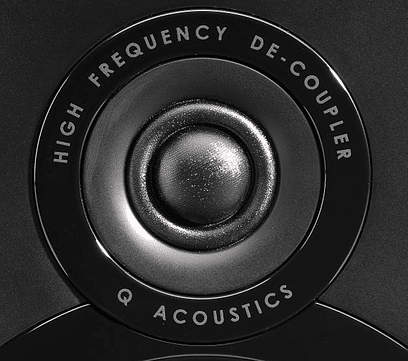
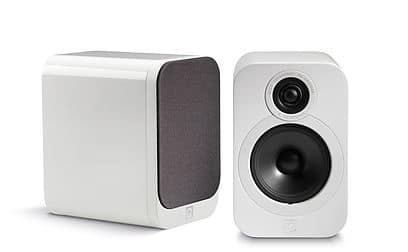
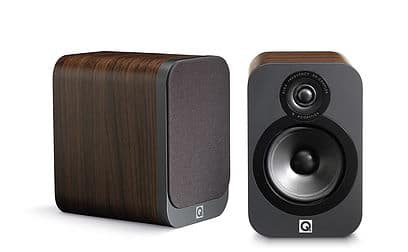
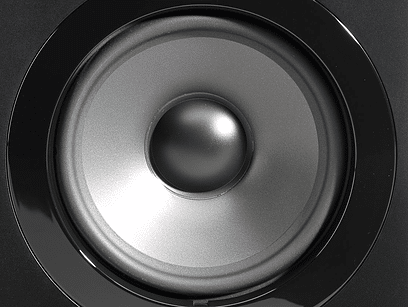
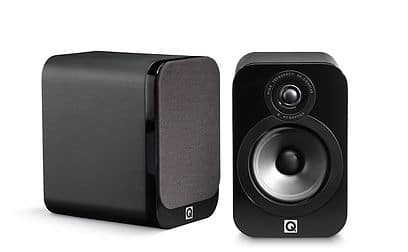

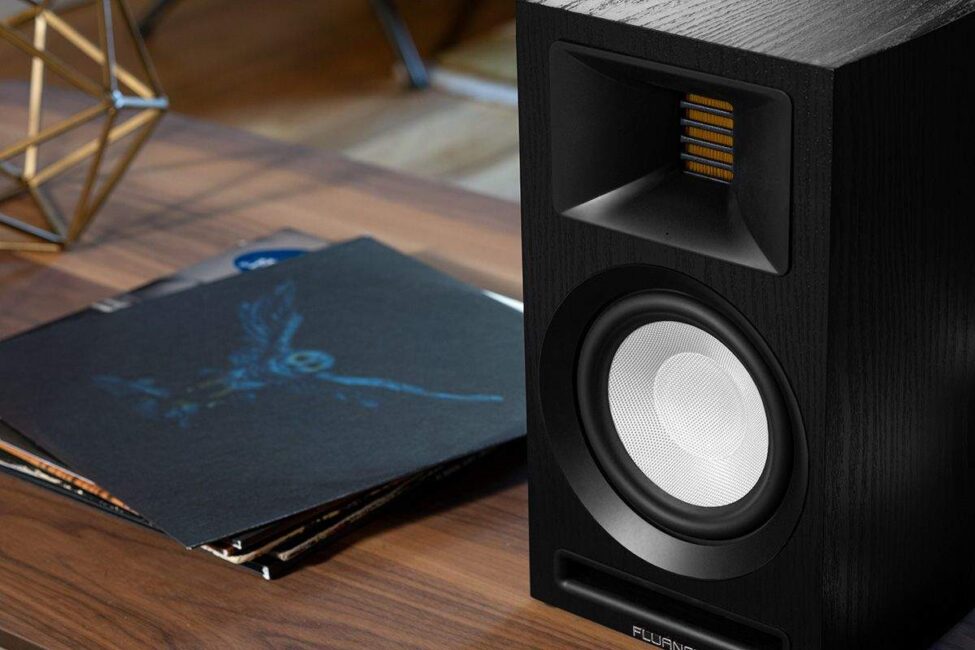

Paul, Thanks for the reply. Sorry for my late response.
In the meantime, I could see the DJs. They are good, but was slightly bigger than what I was looking for and also were ‘beyond my pocket’. So decided not to go any further with Indianaline. One of the shops in my city, could offer me an audition of Marantz PM6006 together with QA3010, which I liked. This together with your review on QA3020i gave me the confidence to order the system, PM6006 together with QA3020i. Thank you for the detailed review on QA speakers.
I listen to music (pop, softrock etc. ) from Spotify (via my mobile and bluetooth), Youtube via a Sony smart TV, and MP3s/CD via a Samsung DVD player having USB input. At the moment, I have a problem with my sources, as my DVD player has gone bad and the 6006 does not have a Bluetooth reciever. Hence I am contemplating solutions like the Allo Digione player and Yamaha WXC 50.
Hi Mathew – not a problem, glad you find the speakers for you. Re the source, that depends on your budget.
I liked the 3020’s at the store I heard them in, they had a pair set up with a small sub for a 2.1 system, but when I got them home, I couldn’t wait to replace them. Way too hot midrange and they just had no “body” to them. Even with my subs crossover freq set as high as I could set it, there was no upper bass unless I just cranked the sub level up. I tried them on my PC running with an older Yamaha receiver, and the little Yamaha bookshelves I had on it sounded a lot better to me, much more natural. My apartment is pretty decent acoustics wise, and even with 3 wall treatment panels added, the 3020’s were not going to work out. I found a bargain pair of Polk LSiM 703’s and am quite happy with those, and I found another cheap pair and then added the 706 Center speaker. The 3020’s are well made, but not for me. I guess this shows why people like different speakers.
Thanks for your comments Hemiram – and indeed, we are all different in terms of our likes and dislikes. I think the fact that you favour Yamaha speakers says a lot 🙂 I can see why the 3020s were not your thing.
Hi Paul. Thanks for a very informative article and column. I am considering either the 3020 or 3020i for use with my NAD C370 (https://www.stereophile.com/content/nad-c370-integrated-amplifier-specifications) but I am not sure they are compatible with this amp. I also have a pair of Sonus farber concertinos but I would not be planning on running both sets of speakers at the same time. An advice you offer is appreciated! Thanks.
Thanks Russell – The Q Acoustics should work well with the NAD. As for the speakers? I would encourage you to read my review of the 3020i speakers because everything I have to say about them is in there 🙂 I also compare them to these original 3020 speakers. Please read that review first and, by all means, come back to me if you have further questions: https://theaudiophileman.com/3020i-q-acoustics-speakers-review/
Hi Paul.
Thanks very much for your response. Q Acoustics has advised me that the NAD C370 might be underpowered with regard to powering the 3020is and could potentially cause damage. QA said to ask NAD whether the C370 is capable of Dynamic Power handling at 4 Ohms. I have reached out to NAD for their advice but they are not getting back to me so I hope you can weigh in again on what I should do. Thanks again!
Best,
Russell
Hi Russell – I’m a bit confused, are you using the 3020i speakers on their own? That should be fine with the NAD. There may be issues using two sets of speakers at the same time, sure. Did I get that wrong? I thought you were only looking to use a single set with the NAD.
Hi Paul. I haven’t bought them 3020is yet and but if I do buy them, I would not be running them at the same time as my other pair of speakers. It seems that matching speakers to an integrated amp is much more complicated than I thought it would be, way back earlier when, say earlier this week before I knew anything about these issues! I sure wouldn’t want to blow up either the speakers or the amp so I just don’t know what to do. Thanks again for your time.
Hi Russell – That’s why I’m a bit confused about Q Acoustic’s response. Unless they think you’ll be running two sets, simultaneously?
Hi Paul,
Great review, and one of the reasons I went for the 3020. I am now looking to upgrade, having purchased a Rega Planar 3 and Brio (2017). What would you recommend as a decent step up from the 3020? I have read good things about the Dynaudio Emit M10/M20, as well as the KEF LS50, which would be at the top of my budget really. Is there any others you would consider listening to?
Many thanks
Ben
Hi Ben – what’s your budget?
Hi Paul, thanks for quick reply. The top limit would be £800 really, or less than this ideally! Рas long as it’s a noticeable upgrade from the 3020.
These would be ideal, Ben: https://theaudiophileman.com/motion-15i-speakers-review-martin-logan/
Great, thanks very much for the recommendation Paul, I will look into them. Appreciate your advice, and keep up the good work!
Many thanks
Ben